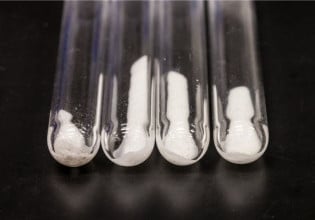Europe & Japan Continue Development Of Li-Ion Batteries For HEVs
Recent announcements reveal that the spotlight on the development of lithium-ion battery technology for use in Hybrid Electric Vehicles (HEVs) continues to shine on Europe and Japan.
Evonik Industries announced that it (along with BASF, Bosch, and Volkswagen) is participating in an R&D initiative with the Federal Ministry for Education and Research (BMBF) for the development of "lithium-ion batteries for mobilizing regenerative energies of the future and increasing efficiency in the conversion of fossil and regenerative energies." The BMBF initiative is scheduled to take three years, and is being funded with €60 million.
Although Li-ion batteries are being used in smaller applications (such as laptops and mobile phones), the usage of Li-ion cells in large-volume power applications continue to remain suspect due to safety concerns related to overheating. According to Evonik, the solution to the problem could lie in supplying new materials and components, such as the company’s SEPARION™ battery separator. Evonik claims that it has now developed a ceramic, but flexible, separator that is significantly more temperature-resistant, and also ensures safer and more reliable Li-ion batteries.
From Japan came the revelation (really more like the letting slip of a semi-secret) that Toyota Motor Corp. has already been using Li-ion batteries in its Vitz subcompact. Toyota Executive VP Masatami Takimoto told a reporter that the battery has been part of the "intelligent package" available with the Vitz as a special feature that can be requested by customers through the local Toyota dealerships in Japan. Takimoto stated that the company had not marketed the option more aggressively due to a dearth of supplies and the resulting inability of Toyota to meet a widespread public demand for the option. Only about 700 Vitz have been sold with the Li-ion battery option in 2007. The special option adds approximately USD $870 to the cost of the vehicle.
The Li-ion battery sits below the passenger seat and recharges when the vehicle is being driven. Testing has revealed that the technology delivers 25 kilometers a liter (60 miles a gallon) as compared to 22 kilometers a liter (53 miles a gallon) in the Vitz without the Li-ion package.
When the vehicle is idling the engine automatically stops without the driver having to turn it off with the ignition (thus saving on gas). When the driver’s foot lifts from the brake pedal, the engine (powered by the Li-ion battery) restarts. However, when the engine is off, the Li-ion battery continues to provide power to the other equipment, such as the air conditioner, interior lights, and radio.






